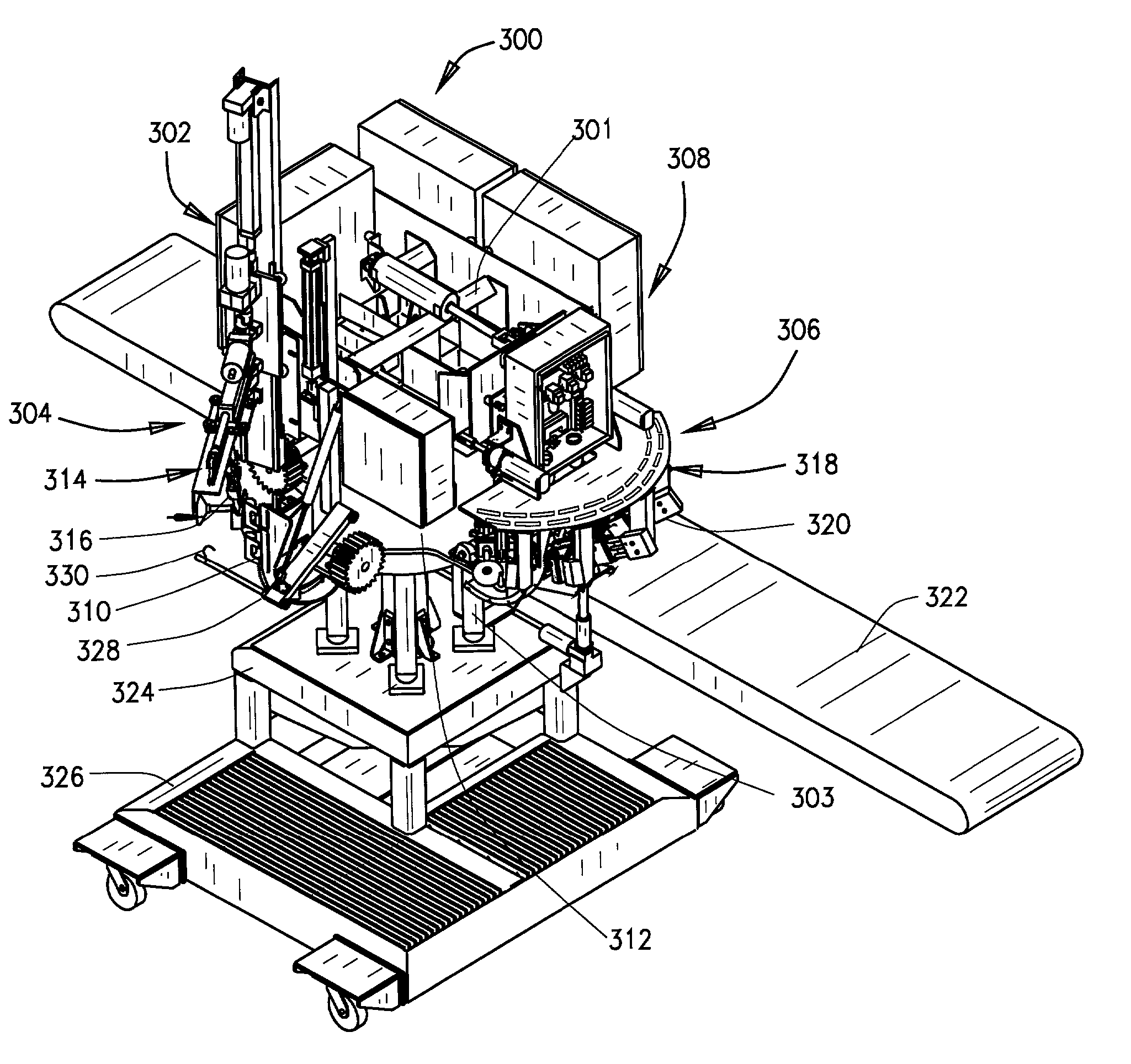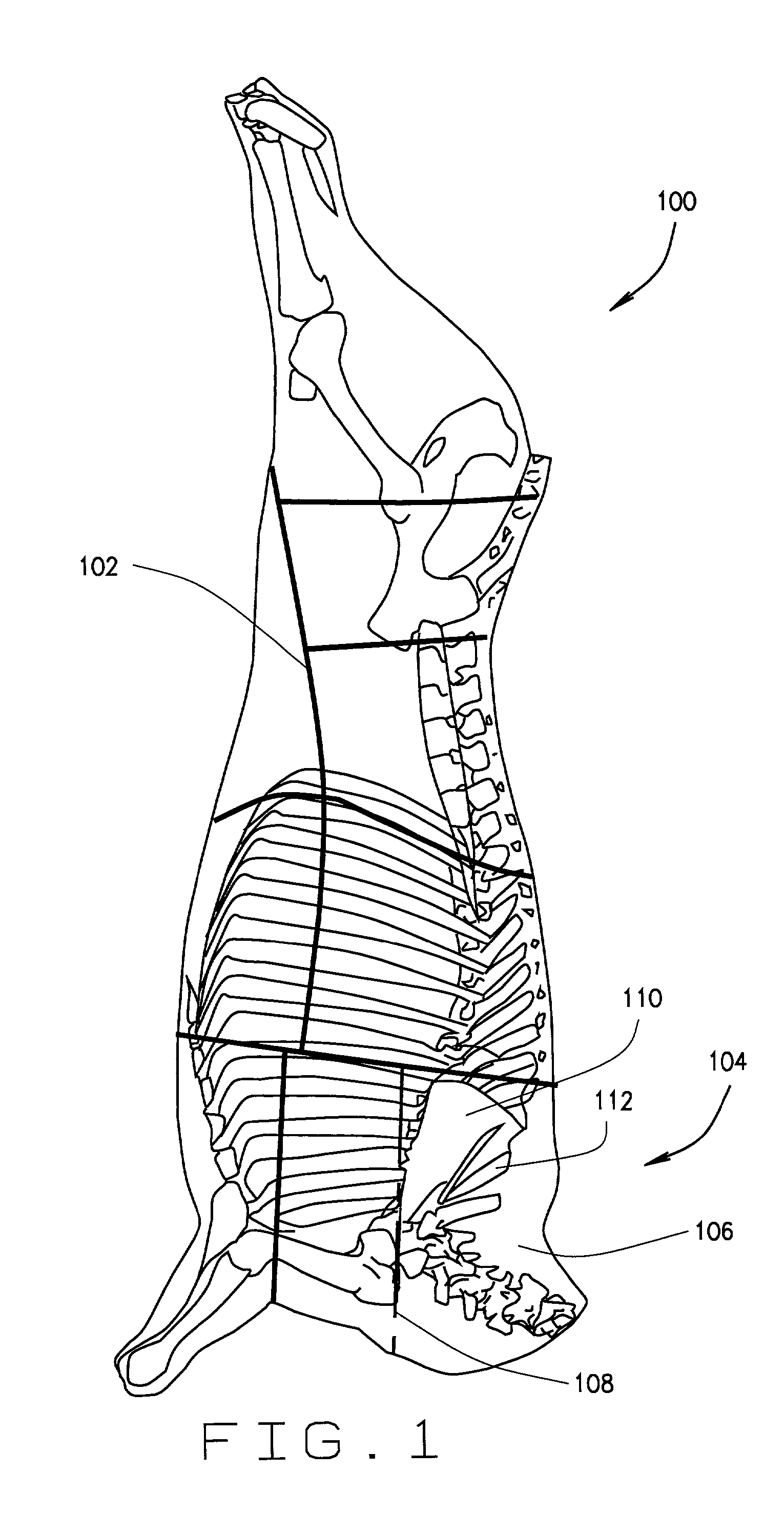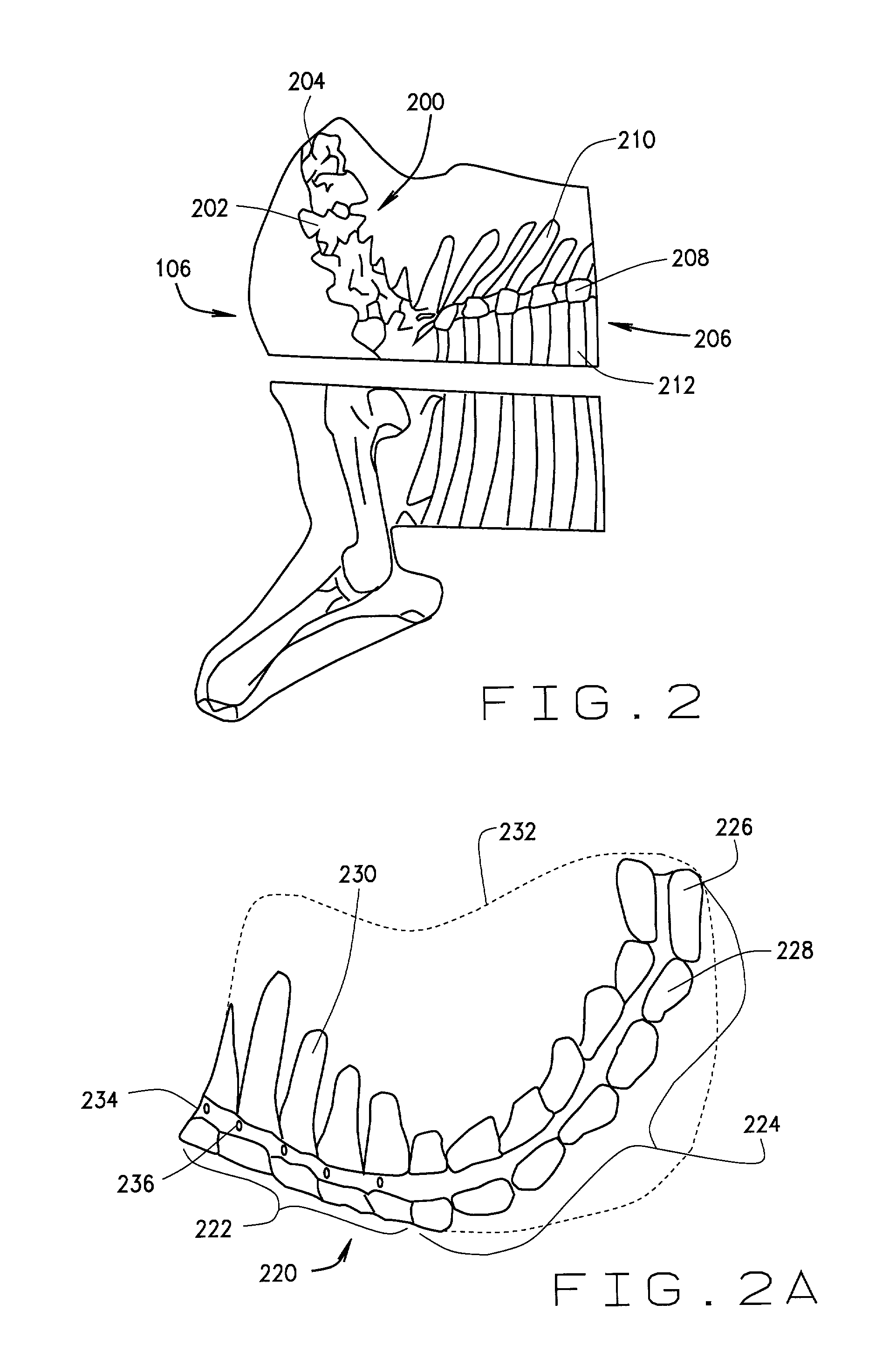Apparatus and method for removing bones from a disassembled animal carcass
a technology for disassembly and animal carcasses, applied in the field of disassembly and processing of animal carcasses primal and subprimal meat portions, can solve the problems of difficult manual manipulation of meat portions, difficult to remove bones from subprimal meat cuts, etc., to achieve significant reduction of stress, strain and difficulty.
- Summary
- Abstract
- Description
- Claims
- Application Information
AI Technical Summary
Benefits of technology
Problems solved by technology
Method used
Image
Examples
Embodiment Construction
[0045] For the purpose of this application, the term "arcual" means, of, relating to or having characteristics of or geometry of an arc.
[0046] According to the embodiment(s) of the present invention, various views are illustrated in FIGS. 1-16 and like reference numerals are being used consistently to refer to like and corresponding parts of the invention for all of the various Figs. of the drawing. The first digit(s) of the reference number for a given item or part should correspond to the FIG. number in which the item or part is first identified.
[0047] The present invention comprising a plurality of mounting fixtures attached to a conveyor platform where the platform is adapted to position the mounting fixtures adjacent a station where mounting, removal or de-boning operations occur. One embodiment of the invention comprises a plurality of mounting fixtures attached to a conveyor platform where the platform is a rotation table and the mounting fixtures are attached in a carousel a...
PUM
 Login to View More
Login to View More Abstract
Description
Claims
Application Information
 Login to View More
Login to View More - R&D
- Intellectual Property
- Life Sciences
- Materials
- Tech Scout
- Unparalleled Data Quality
- Higher Quality Content
- 60% Fewer Hallucinations
Browse by: Latest US Patents, China's latest patents, Technical Efficacy Thesaurus, Application Domain, Technology Topic, Popular Technical Reports.
© 2025 PatSnap. All rights reserved.Legal|Privacy policy|Modern Slavery Act Transparency Statement|Sitemap|About US| Contact US: help@patsnap.com



